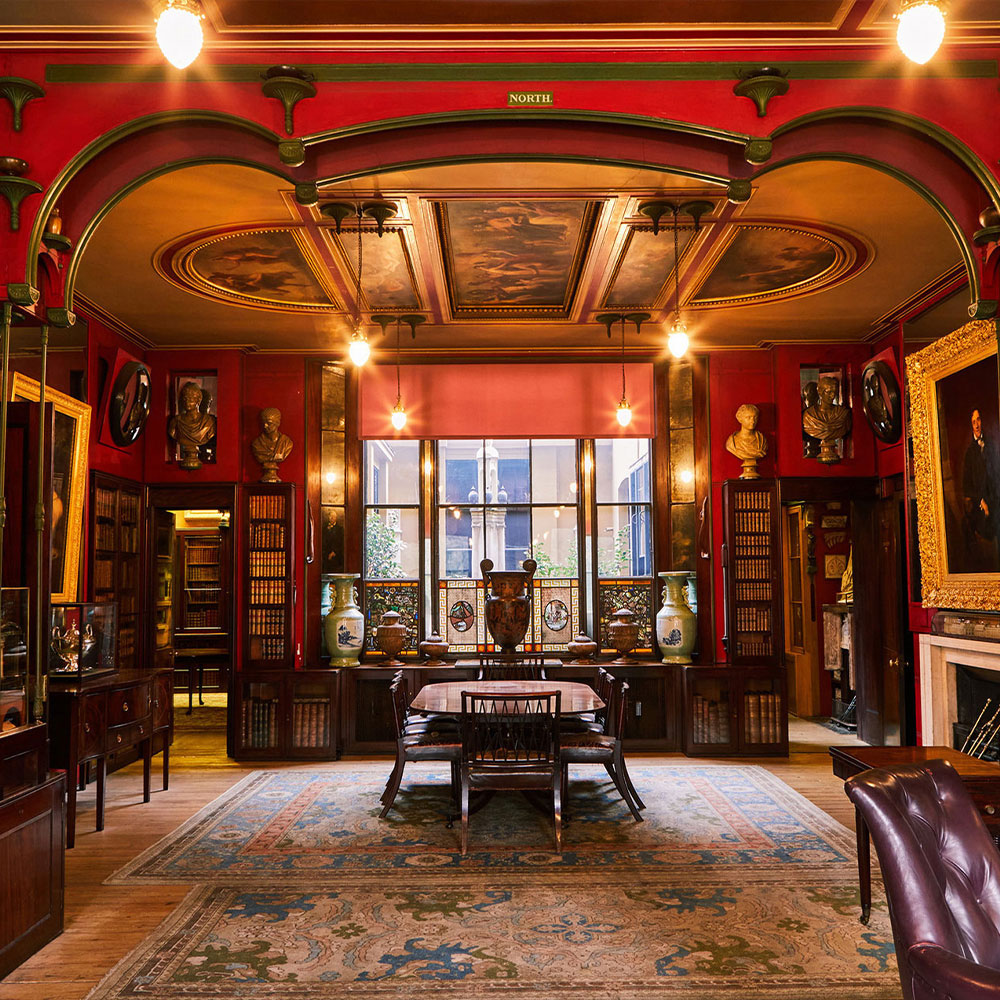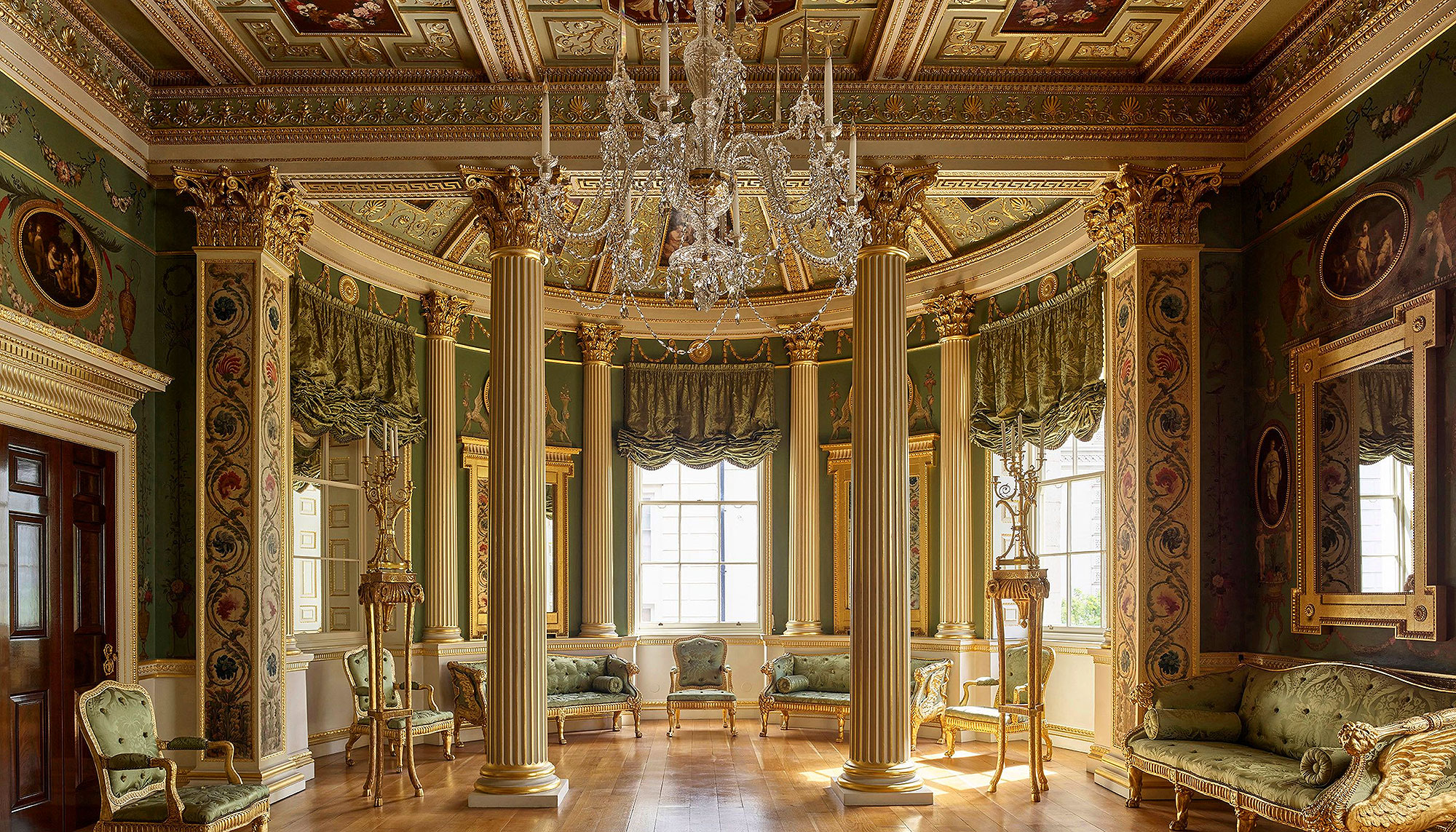
18th Century Architecture
in London
18th century
Bevis Marks Synagogue, 1701
MAP | EAST LONDON, CITY OF LONDON
Bevis Marks Synagogue is an Orthodox Jewish congregation and synagogue, located off Bevis Marks, Aldgate, in the City of London. Built in 1701, the Grade I listed building is the oldest synagogue in the United Kingdom in continuous use. It is the only synagogue building in Europe that has continuously held regular services for more than 320 years.
The congregation is affiliated with London’s historic Spanish and Portuguese Jewish community and worships in the Sephardic rite. These Jews began practicing their religion openly once it became possible to do so through Jewish resettlement in England under the rule of Oliver Cromwell. For Sephardic Jews, the Bevis Marks Synagogue was a religious centre of the Anglo-Jewish world for more than a century, and served as a clearing-house for congregational and individual Jewish problems all over the world.
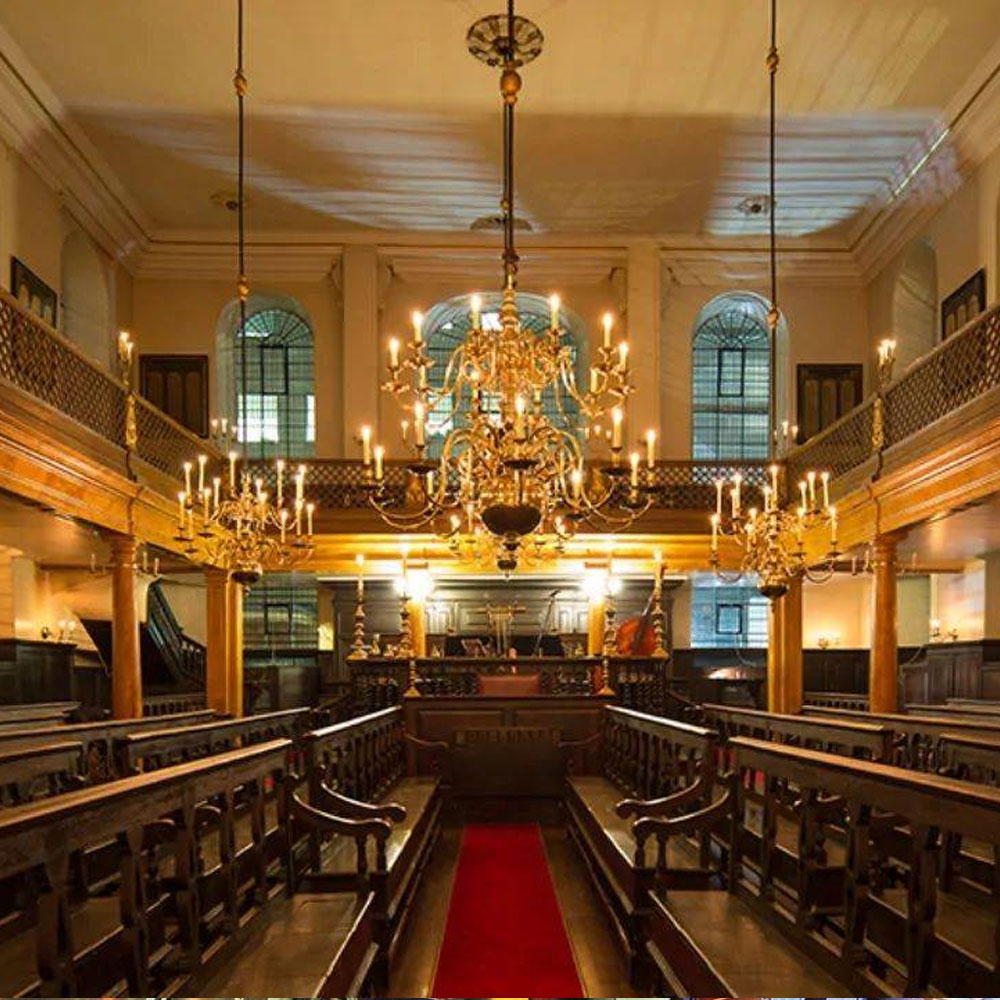
Thomas Carlyle’s House, 1708
MAP | WEST LONDON, CHELSEA
The Carlyles moved into 5 Cheyne Row in 1834; the street address was changed to 24 in 1877. Cheyne Walk takes its name from William Cheyne, Viscount Newhaven who owned the manor of Chelsea until 1712. The street, then known as ‘Great Cheyne Row’, was laid out in 1708 upon the gardens of the Feathers pub. In 1815 the name was changed ‘Cheyne Row’. It runs north from Cheyne Walk. Most of the houses were built in the early 18th century. Before the construction in the 19th century of the busy Chelsea Embankment, which now runs in front of it, the houses fronted the River Thames. Chelsea Old Church dates from 1157. Open Wednesdays only, 11am-4:30pm
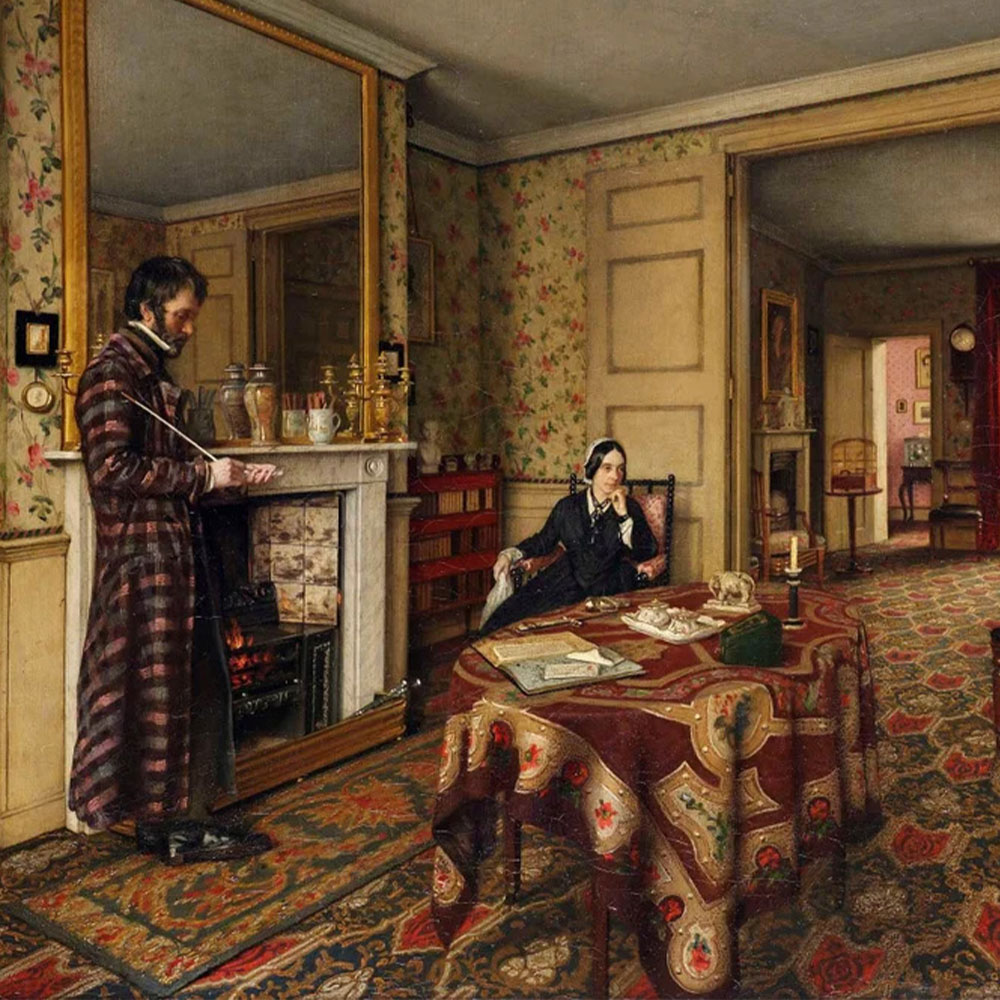
Greenwich Naval Hospital, 1696-1751
MAP | GREENWICH
Architects: Christopher Wren, Nicholas Hawksmoor, John Vanbrugh, James Thornhill
Sir Christopher Wren was responsible for the original ‘Grand Design’ for the Hospital. The earlier Queen’s House, designed by Inigo Jones for Anne of Denmark, wife of James I, remained in its position south of Wren’s buildings. Wren’s former apprentice, Nicholas Hawksmoor was appointed Site Architect for Greenwich Hospital. Wren’s successor as surveyor to the Hospital was Sir John Vanbrugh, who designed Castle Howard and Blenheim Palace. It was Vanbrugh who added the touches of grandeur to the design, turning accommodation for old sailors into a magnificent national monument. Vanbrugh also commissioned artist James Thornhill to decorate the walls and ceiling of the splendid Painted Hall. Records also show that a Mr Daniel Foe was contracted to supply bricks for the building. He later became famous as Daniel Defoe, author of Robinson Crusoe.
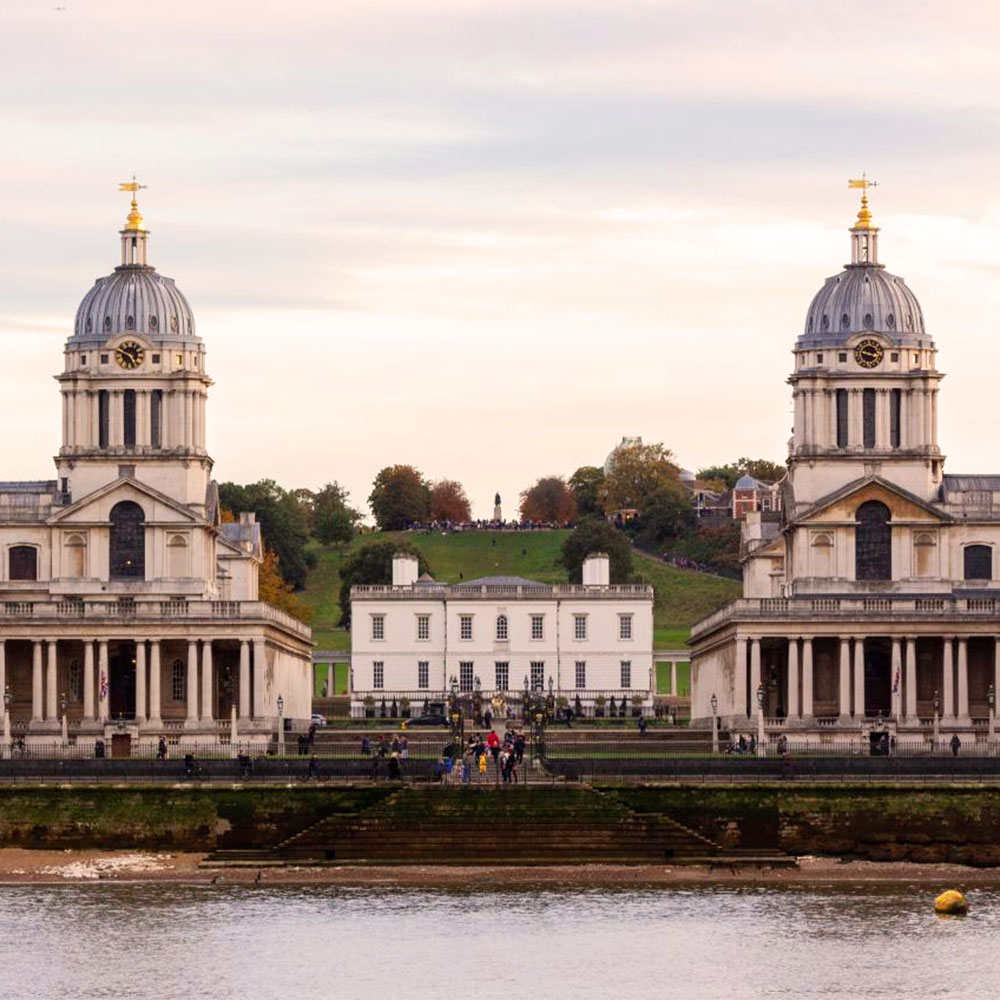
Geffrye Museum, 1714
MAP | EAST LONDON
The Museum of the Home, formerly the Geffrye Museum, is a free museum housed in an 18th-century Grade I-listed former almshouse.
The museum explores home and home life from 1600 to the present day with galleries which ask questions about ‘home’, present diverse lived experiences, and examine the psychological and emotional relationships people have with the idea of “home” alongside a series of period room displays. Open Daily, 10am–5pm
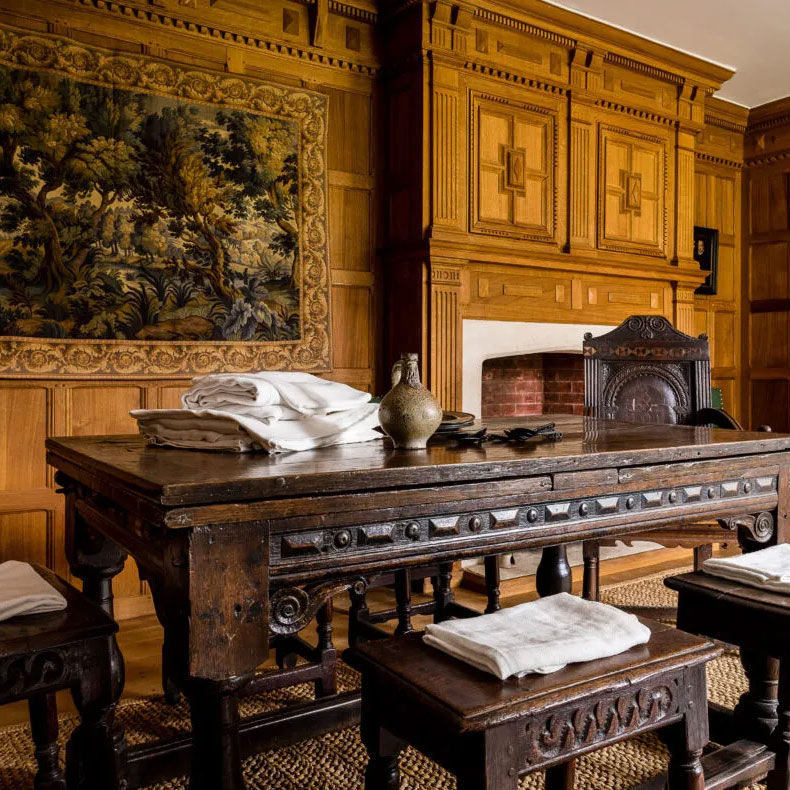
Dennis Severs’ House, c1724
MAP | EAST LONDON, SPITALFIELDS
More an immersive experience than a museum. Explore the astonishing interiors of this beautiful home as if the 18th-century residents, a family of Huguenot silk weavers, have just left the room. Some tours take place by candlelight!
Each room is a ‘still life drama’, with each detail intentionally placed to evoke traces of the Jervis family, with half-eaten scones, cups of tea and crackling fires. Quiet sounds of 18th century London accompany you with church bells, clopping hooves, footsteps on the creaking wooden floors, or the faint sound of conversations that remain tantalizingly just out of reach. TICKETED ENTRY
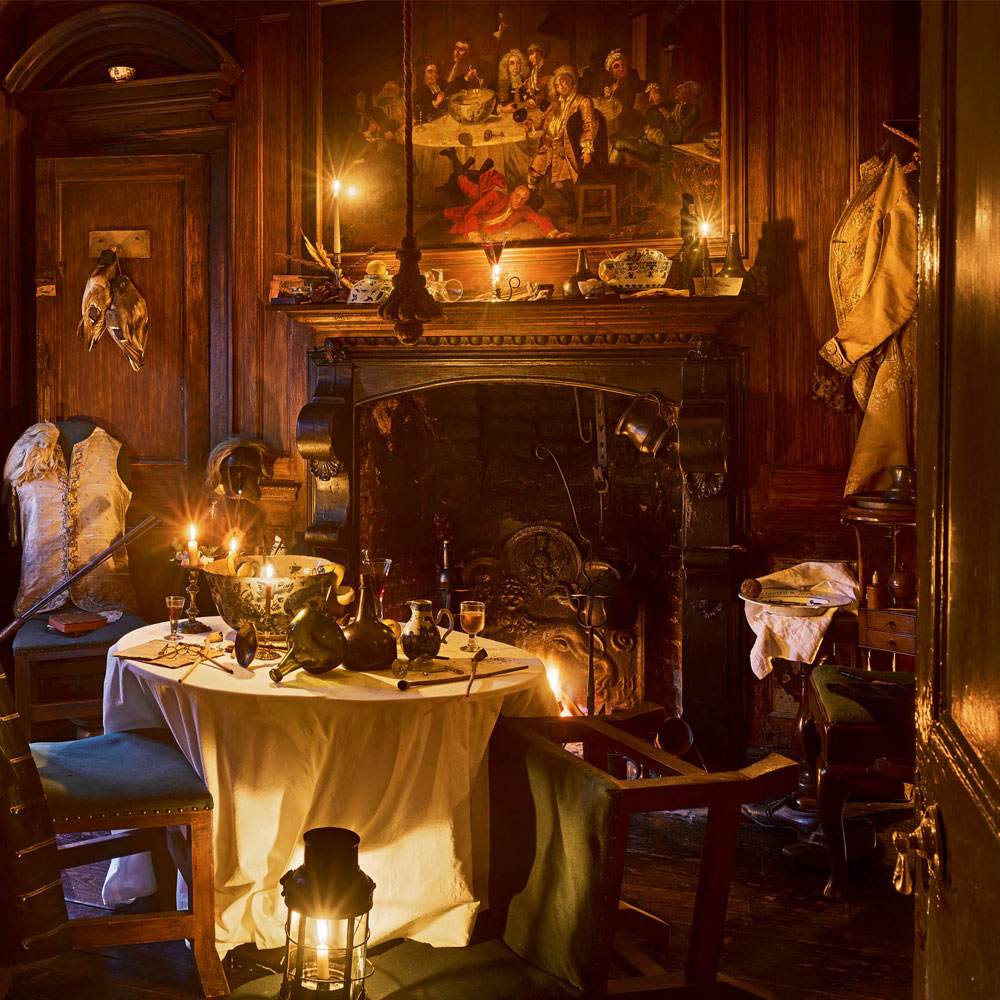
Marble Hill House, 1724-1729
MAP | TWICKENHAM
Architects: Roger Morris, Henry Herbert, 9th Earl of Pembroke
Marble Hill House was built in 1724–1729 by Henrietta Howard, the mistress of George II, to the designs of the architect Roger Morris in collaboration with Henry Herbert, 9th Earl of Pembroke, one of the “architect earls”. Pembroke, then Lord Herbert, based the design of Marble Hill to a large degree on Andrea Palladio’s 1553 Villa Cornaro in Piombino Dese, Italy, and thus incorporated a cubic saloon on the first floor or piano nobile. The Great Room contains lavishly gilded decoration and five capricci paintings by Giovanni Paolo Pannini. Marble Hill House also contains a loaned collection of early Georgian furniture and paintings as well as the Chinoiserie collection of the Lazenby Bequest.
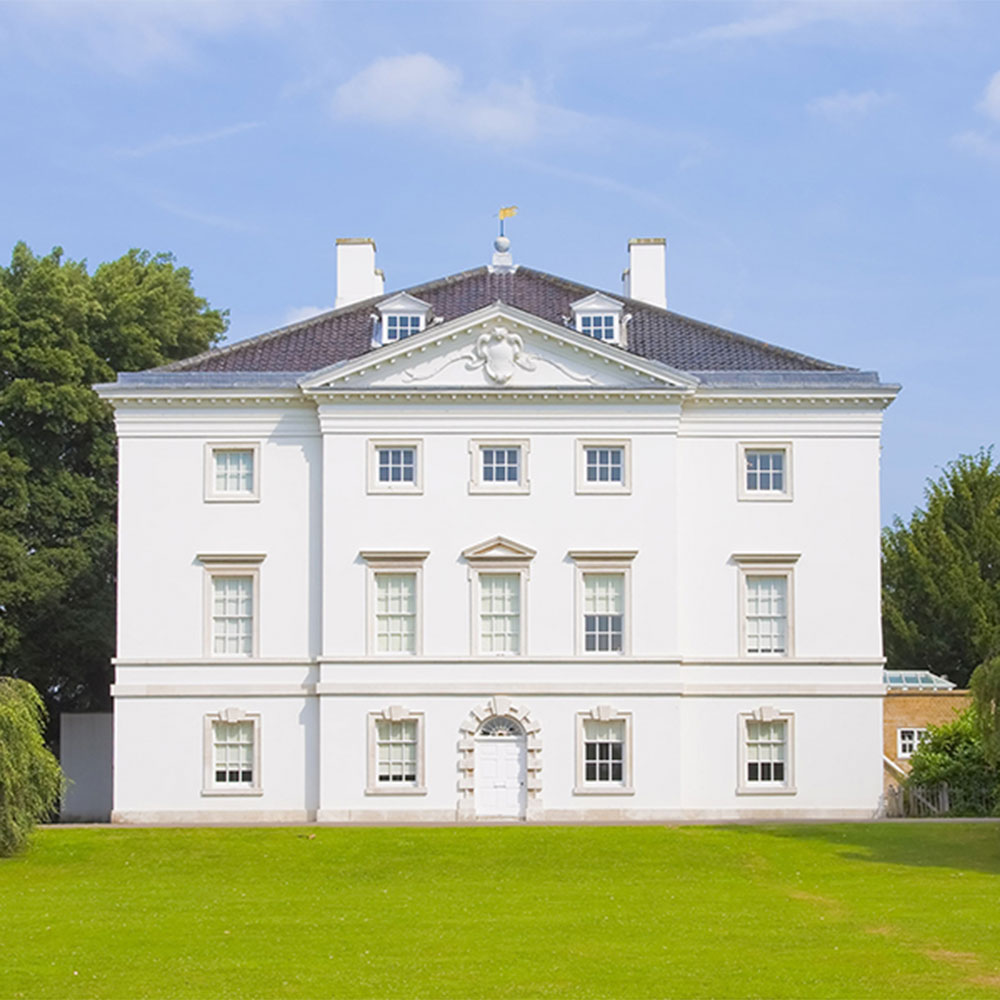
Chiswick House & Gardens, 1726-1729
MAP | CHISWICK
Architects: Inigo Jones (gateway), Richard Boyle, 3rd Earl of Burlington, William Kent, James Wyatt, Francis Fowke
Chiswick House is an example of English Palladian Architecture and arguably the finest remaining example of Neo-Palladian architecture in London, the house was designed by Lord Burlington, and built between 1727 and 1729. Inspired in part by the 16th-century Italian architect Andrea Palladio, the house is often said to be directly inspired by his Villa Capra “La Rotonda” near Vicenza. The house’s design, including its central-plan layout and geometric room designs, was groundbreaking for its time and influenced subsequent Georgian architecture. The gardens, considered the birthplace of the English landscape movement, were designed to create a more natural and picturesque setting.
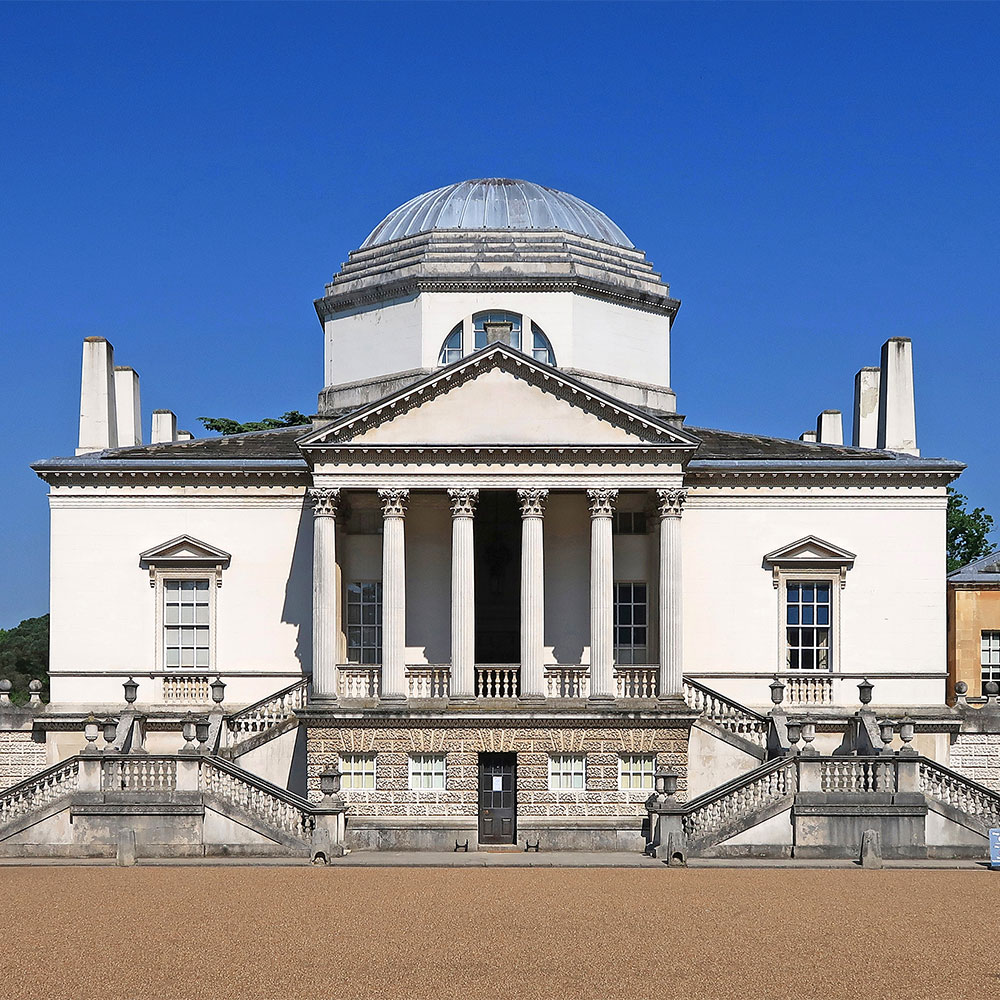
Royal Over-Seas League, c1730
MAP | WEST LONDON, ST. JAMES
Architect: James Gibbs
This is our club in London – one of a handful of historic buildings left with gardens backing up to Green Park. The Royal Over-Seas League’s London building, Over-Seas House, is a combination of three historic buildings: Rutland House, Vernon House, and the Westminster Wing. Rutland House, designed by James Gibbs in the 1730s, is a classical Georgian building and the only surviving London townhouse by the architect. Vernon House, dating back to the late 17th or early 18th century, was rebuilt in the 19th century and again in 1905 after a fire. The Westminster Wing, an Art Deco structure, was added in 1937. The buildings were combined to form the current clubhouse, which has been the organization’s London home since 1922.
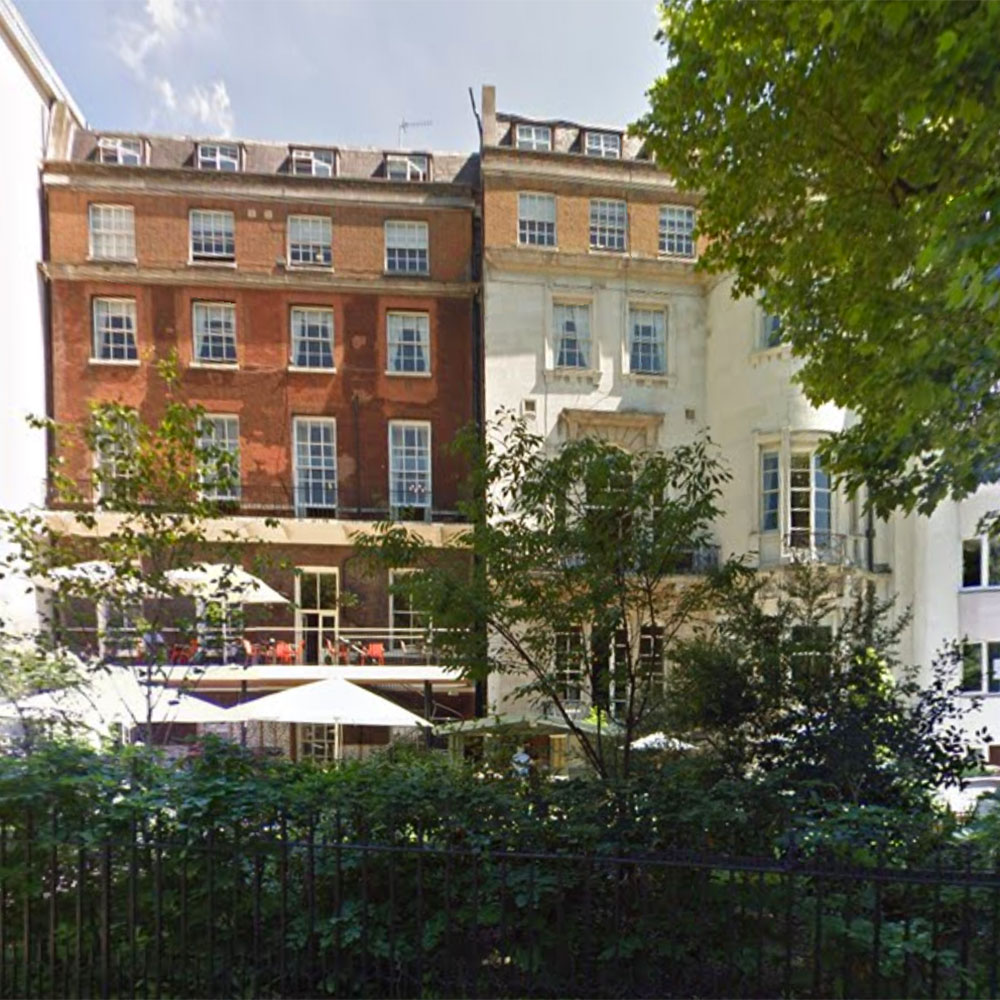
Strawberry Hill, 1749-1776
MAP | TWICKENHAM
Architects: Horace Walpole, James Essex
Strawberry Hill House—often called simply Strawberry Hill—is a Gothic Revival villa that was built in Twickenham, London, by Horace Walpole from 1749 onward. It is a typical example of the “Strawberry Hill Gothic” style of architecture, and it prefigured the nineteenth-century Gothic Revival. Walpole rebuilt the existing house in stages starting in 1749, 1760, 1772 and 1776. These added Gothic features such as towers and battlements outside and elaborate decoration inside to create “gloomth” to suit Walpole’s collection of antiquarian objects, contrasting with the more cheerful or “riant” garden. The interior included a Robert Adam fireplace; parts of the exterior were designed by James Essex.
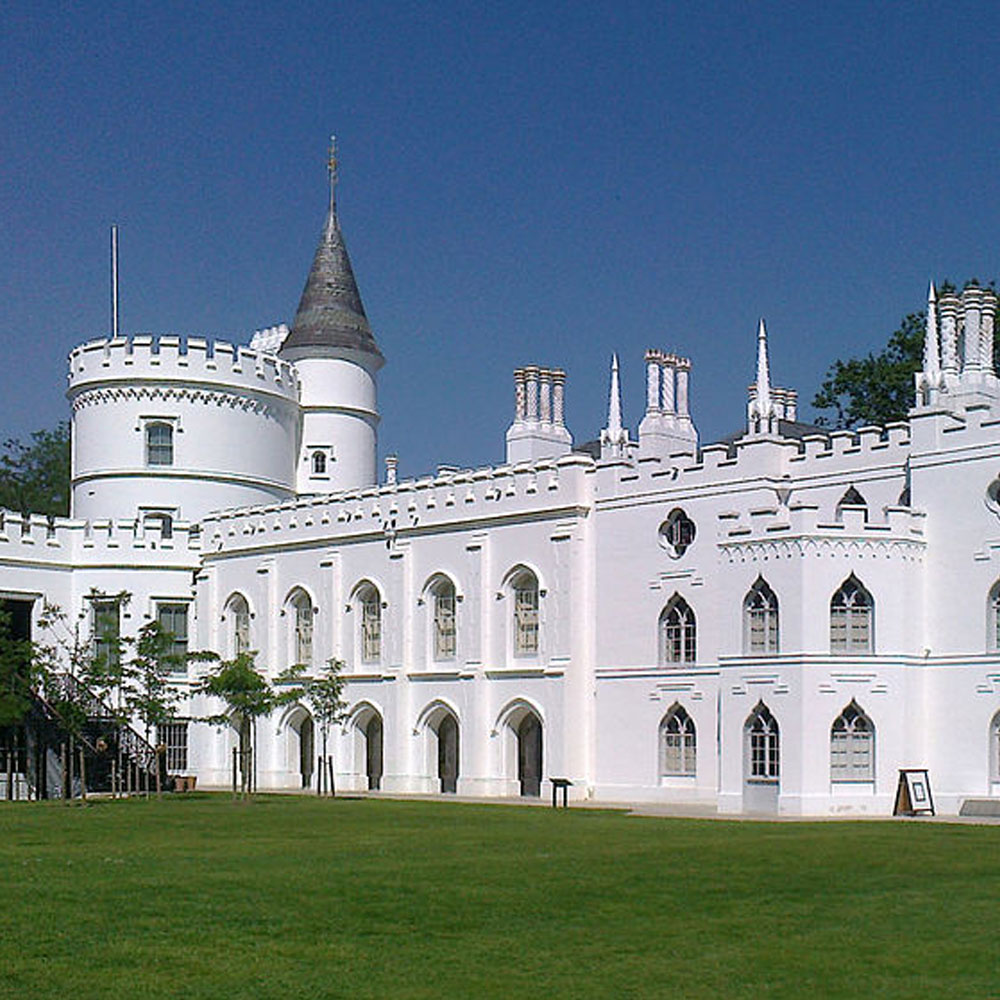
Emory Walker House, c1750s
MAP | WEST LONDON, HAMMERSMITH
Emery Walker’s House at 7 Hammersmith Terrace is one of 17 tall, narrow houses, built on the north bank of the River Thames between Chiswick Mall and Lower Mall in the 1750s. But it is known for Emory Walker’s collection of Arts & Crafts furniture, decor and objects.
There are masses of marvelous Morris & Co textiles and wallpapers and furniture and other items designed by Philip Webb, but these mingle with 17th and 18th-century English furniture, Middle-Eastern rugs, and Chinese and Moroccan ceramics. Exactly how Arts & Crafts protagonists would have decorated their homes.
Open for Tours: Thurs & Sat 11am, 1pm (& in July 3pm) BOOK TICKETS
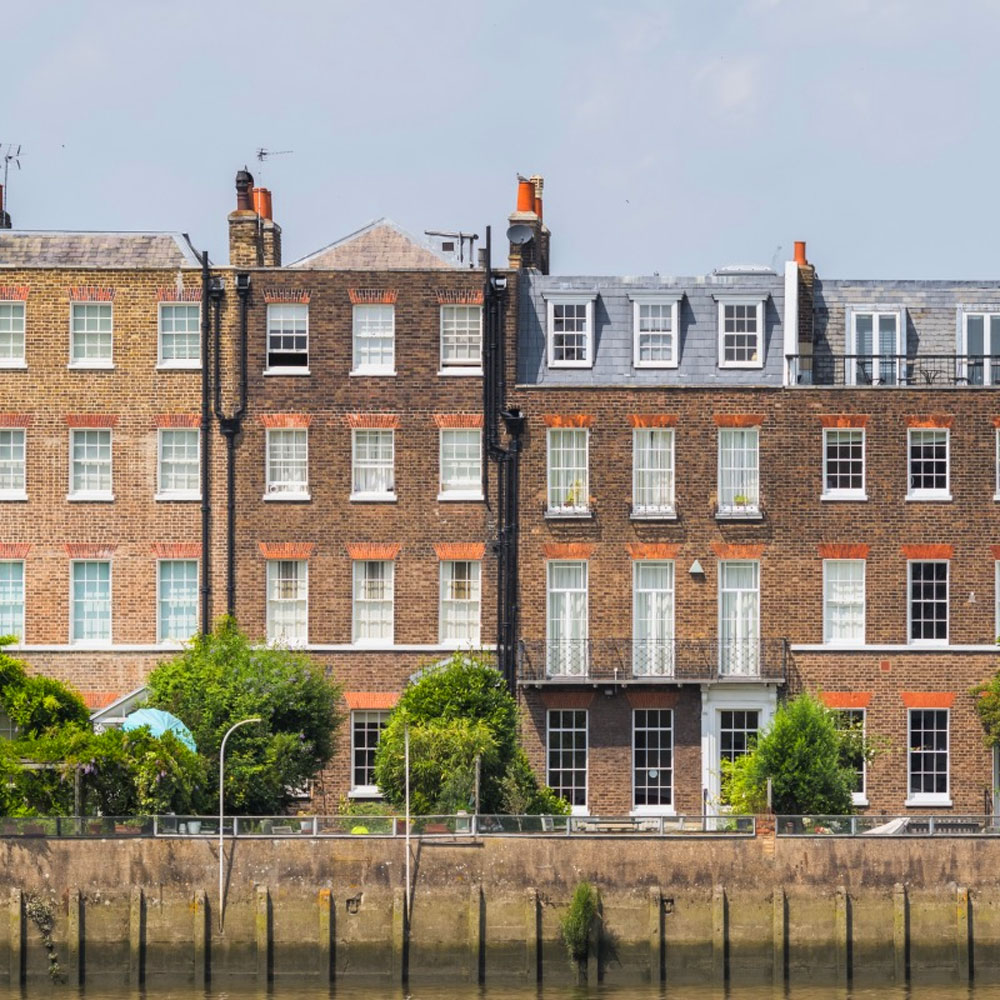
Spencer House, 1756-66
MAP | WEST LONDON, ST JAMES
Architects: John Vardy, James ‘Athenian’ Stuart
Spencer House is a rare survivor of the great aristocratic palaces that once adorned London. Built in 1756-66 for the First Lord and Lady Spencer in a prime location overlooking Green Park, the house immediately became an important architectural landmark whilst the spectacular suite of State Rooms has played host to the social, political and cultural elite of each generation.
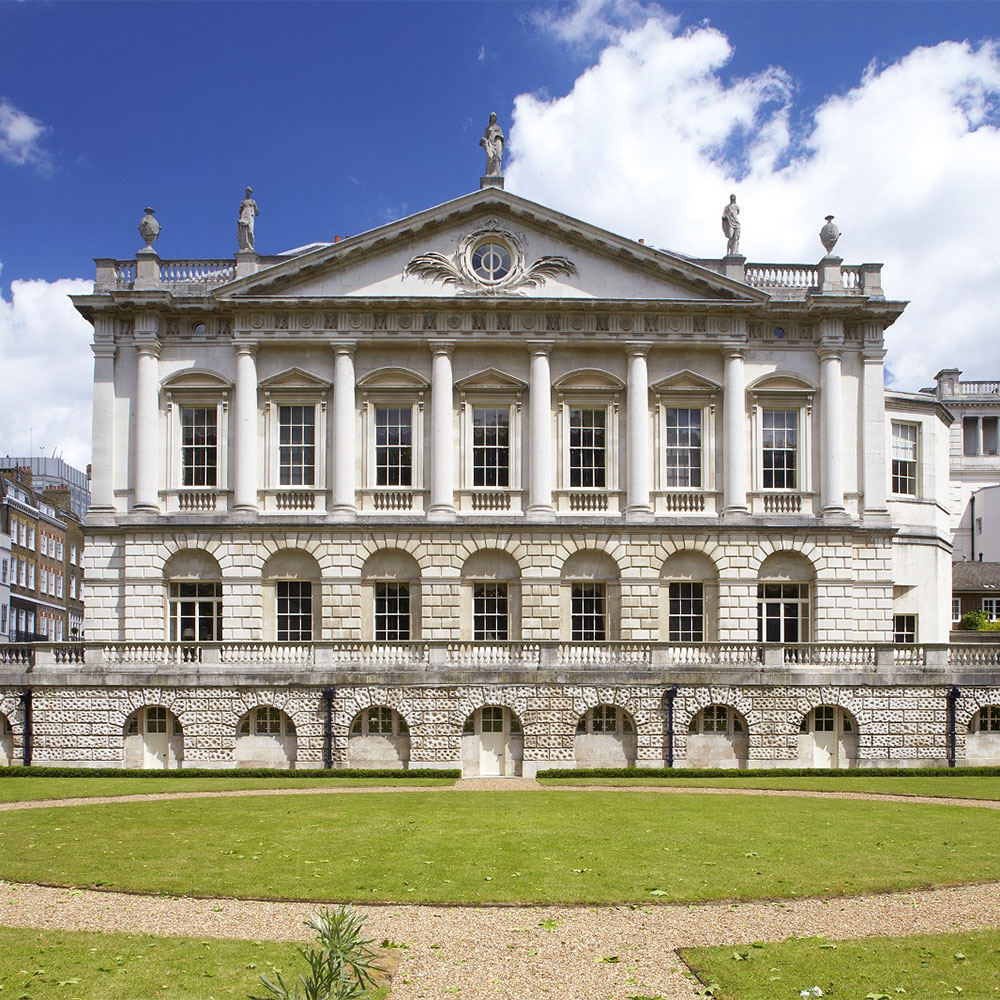
Osterley Park & House, 1761-1780
MAP | WEST LONDON, ISLEWORTH
Architect: Robert Adam
Osterley Park is a Georgian country estate in west London. The estate contains a number of Grade I and II listed buildings, with the park listed as Grade II. The main building (Osterley House) was remodeled by Robert Adam between 1761 and 1765. Adam’s neoclassical interiors are among his most notable sequences of rooms. Horace Walpole described the drawing room as “worthy of Eve before the fall”. The rooms are characteriZed by elaborate but restrained plasterwork, rich, highly varied color schemes, and a degree of coordination between decor and furnishings unusual in English neoclassical interiors. Adam also designed some of the furniture, including the opulent domed state bed, which is still in the house.
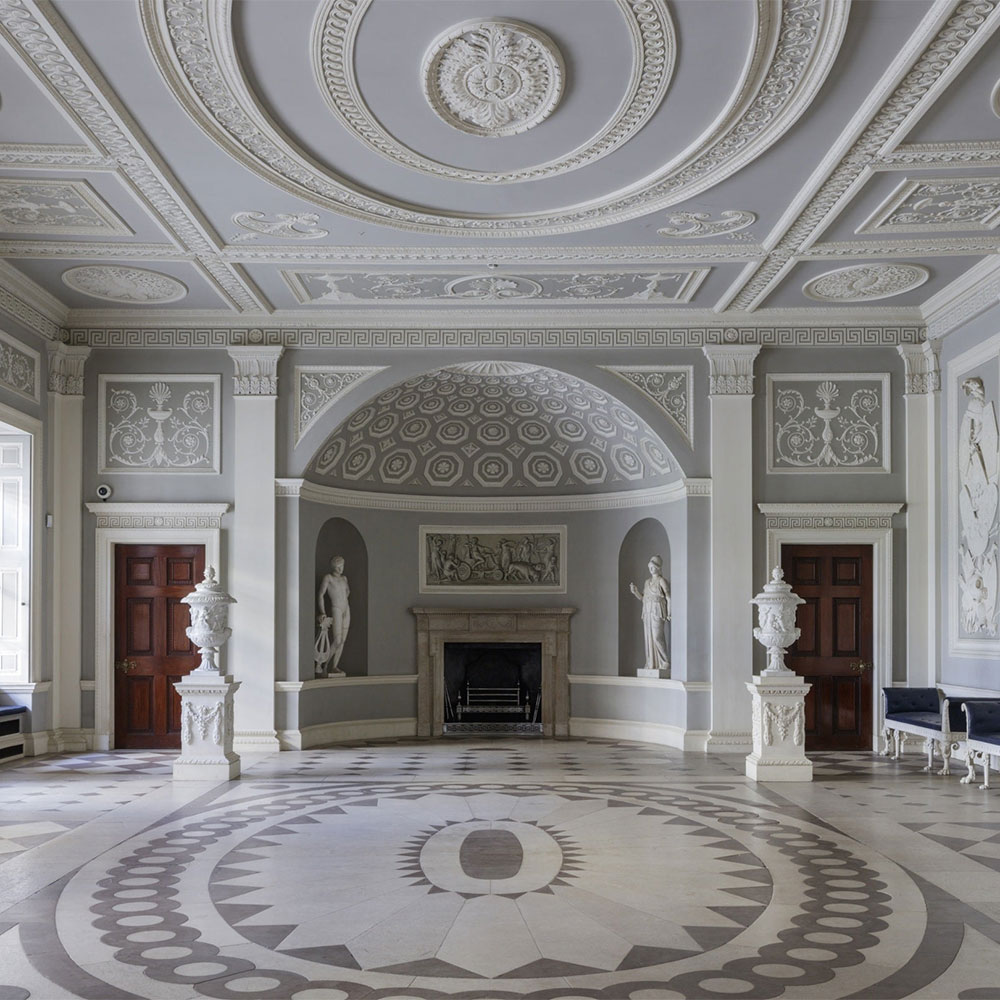
Syon House, 1762-69
MAP | HOUNSLOW
Architect: Robert Adam
In the 18th century, Hugh Percy, 1st Duke of Northumberland, commissioned architect and interior designer Robert Adam and landscape designer Lancelot “Capability” Brown to redesign the house and estate. The well known “Adam style” is said to have begun with Syon House. It was commissioned to be built in the Neo-classical style, which was fulfilled, but Adam’s eclectic style doesn’t end there. Syon is filled with multiple styles and inspirations including a huge influence of Roman antiquity, highly visible Romantic, Picturesque, Baroque and Mannerist styles and a dash of Gothic. Syon Park is a 200-acre park bordering the Thames, looking across the river to Kew Gardens. Near its banks is a tidal meadow flooded twice a day by the river.
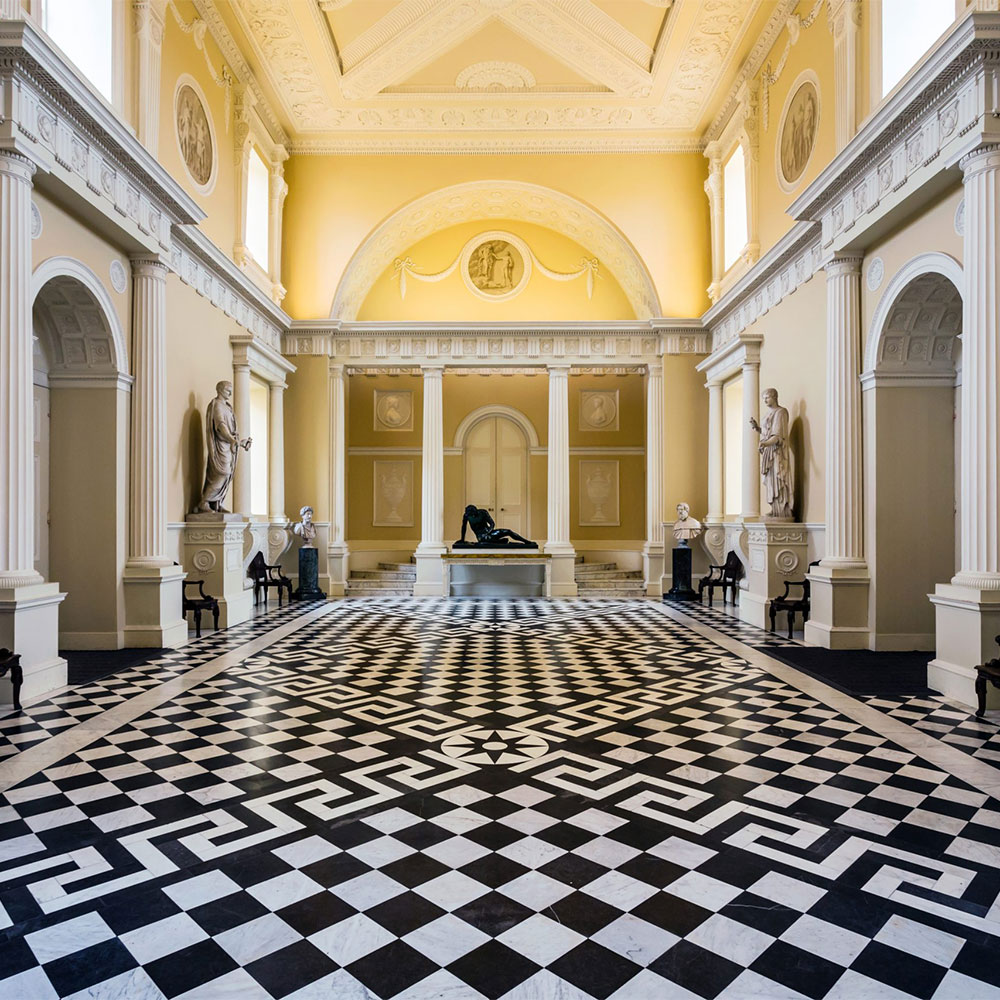
Kenwood House, 1764
MAP | NORTH LONDON, HAMPSTEAD | EXHIBITION VIDEO
Architect: Robert Adam
On the edge of Hampstead Heath and surrounded by tranquil landscaped gardens, Kenwood is one of London’s hidden gems. The breathtaking interiors and stunning world-class art collection, which includes Rembrandt’s ‘Self-Portrait with Two Circles’, are free for everyone to enjoy.
What did Kenwood House have to do with Jane Austen and slavery? If you have nothing better to do, read my thoughts on the matter… LEARN MORE
Open: Grounds: 8am – 8pm, House: 10am – 5pm

Somerset House, 1776-1801
MAP | WEST LONDON, THE STRAND
Architects: Inigo Jones, William Chambers, James Wyatt, Thomas Hardwick, Albert Richardson
The Georgian era quadrangle is built on the site of a Tudor palace (“Old Somerset House”) originally belonging to the Duke of Somerset. The present Somerset House was designed by Sir William Chambers, begun in 1776, and was further extended with Victorian era outer wings to the east and west in 1831 and 1856 respectively. Starting in 1779, the North Wing of Somerset House was initially fitted out to house the Royal Academy, the Royal Society and the Society of Antiquaries.
The North Wing is now occupied by the Courtauld Institute of Art, including the Courtauld Gallery, which has an important collection of old master and impressionist paintings. Open Daily, 10am-6pm
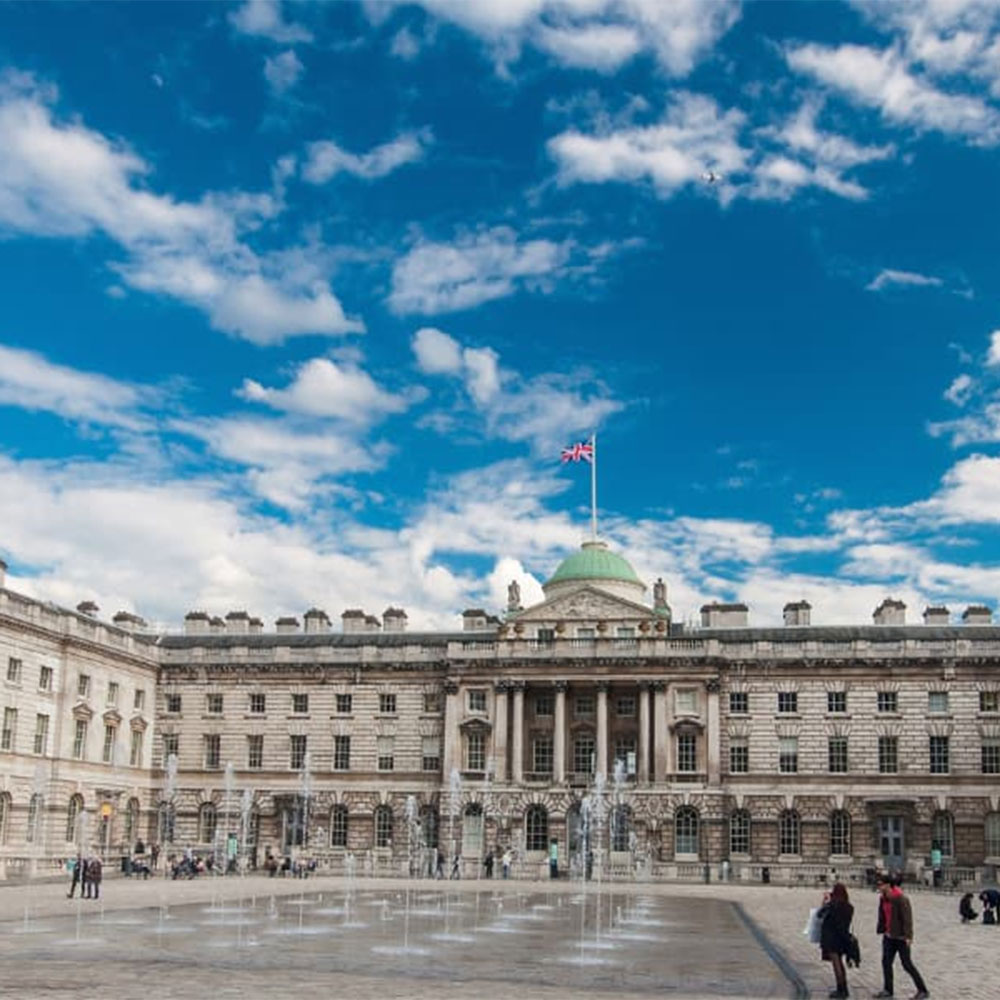
Sir John Soane’s Museum, 1794
MAP | CENTRAL LONDON, HOLBORN
Architect: Sir John Soane
Sir John Soane’s Museum was formerly the home of neo-classical architect John Soane. A true gem in the center of London, it is a remarkable spot that houses a vast body of art, sculptures, ancient artifacts, and historical documents – all in a setting of unparalleled, captivating beauty.
The eclectic collection of artifacts is inspiringly curated and displayed, with a wide range of works by Turner and Canaletto to Egyptian antiquities. One of the highlights of the museum is the collection of Hogarth paintings. Open Wed-Sun, 10am–5pm (last entry 4:30pm), Occasional Late Nights
